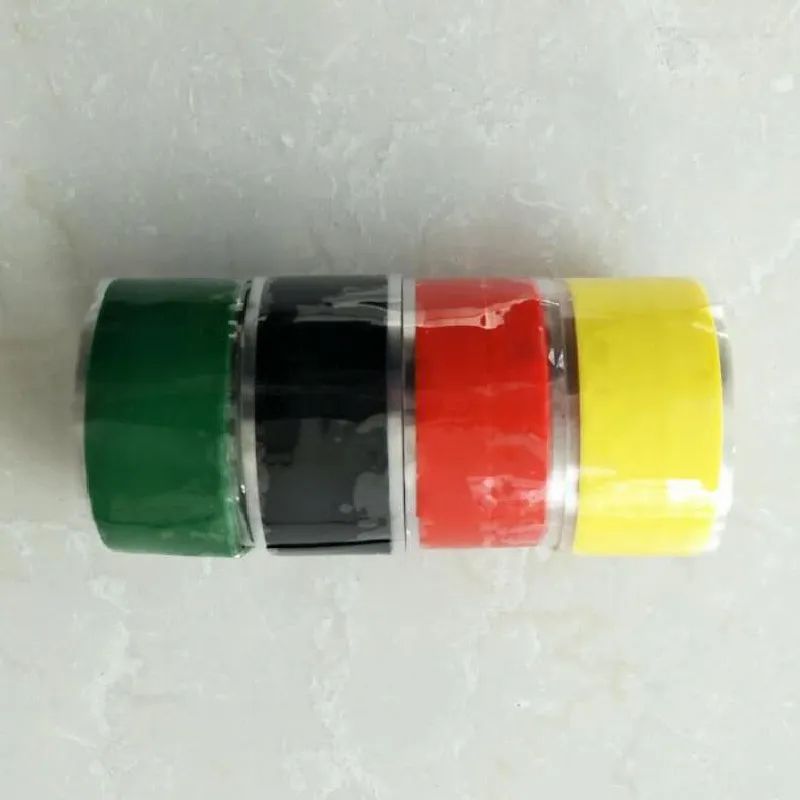Understanding Insulation Tape Types
Insulation tape is a versatile tool used across various industries, from electrical work to automotive applications. It plays a crucial role in ensuring safety and functionality when dealing with electrical and mechanical systems. This article aims to explore the different types of insulation tape available, their characteristics, and their most suitable applications.
1. Vinyl Electrical Tape
Vinyl electrical tape is one of the most commonly used insulation tapes. Made from a soft and flexible PVC material, it can stretch and conform to different shapes, making it highly effective for insulation purposes. This type of tape is resistant to moisture, acids, and alkalis, providing excellent protection for electrical wires and connections. Available in various colors, vinyl electrical tape is not only functional but also useful for color-coding electrical circuits, which enhances organization and safety.
2. Rubber Electrical Tape
Rubber electrical tape is designed for more demanding insulation needs. Composed of an elastic rubber material, this tape offers superior insulation and protection against electrical leakage. It is often used in high-voltage applications and is effective in environments with extreme temperatures. The rubber composition allows it to maintain its insulating properties even when exposed to heat and moisture, making it ideal for outdoor use or areas where electrical systems may be exposed to harsh conditions.
insulation tape types

Fiberglass insulation tape is specifically designed for high-temperature applications. This tape is woven with fiberglass fabric and is often coated with a resin that enhances its insulating capabilities. It can withstand extreme temperatures, making it suitable for use in industrial settings, automotive applications, and around HVAC systems. Fiberglass tape is also resistant to chemicals and is often employed to protect sensitive components from thermal exposure.
4. Foam Insulation Tape
Foam insulation tape is designed to serve dual purposes providing insulation against temperature fluctuations and absorbing shocks. Typically made from polyethylene foam, this tape is ideal for sealing gaps and preventing drafts in various applications, such as in homes and vehicles. It can also be used to insulate wires and cables, protecting them from abrasion and environmental impacts. Foam tape is lightweight and easy to apply, offering a practical solution for both insulation and cushioning needs.
5. Petroleum Tape
Petroleum tape, also known as self-amalgamating tape, is unique in its application. This type of tape is made from a rubber base and does not have an adhesive backing. Instead, it bonds to itself when wrapped around objects, creating a waterproof seal. Petroleum tape is commonly used in plumbing, electrical wiring, and outdoor applications due to its robust insulation properties and resistance to moisture and UV radiation.
Conclusion
Choosing the right type of insulation tape is crucial for ensuring safety and effectiveness in various applications. From vinyl and rubber electrical tapes to fiberglass, foam, and petroleum tapes, each type has its specific use cases based on environmental conditions and insulation requirements. Understanding these differences helps professionals and DIY enthusiasts select the correct tape for their projects, ultimately enhancing the longevity and reliability of their electrical and mechanical systems. Whether you're insulating wires, sealing gaps, or protecting sensitive components, there's an insulation tape designed to meet your needs.
-
XIANGFAN Rubber Tape-Ultimate Solutions for All Your Insulation NeedsNewsJun.24,2025
-
XIANGFAN Rubber Tape-Protection for Industrial and Residential ApplicationsNewsJun.24,2025
-
XIANGFAN Rubber Tape: Superior Safety and Sealing for Demanding EnvironmentsNewsJun.24,2025
-
XIANGFAN Rubber Tape: Reliable Solutions for Every Electrical ChallengeNewsJun.24,2025
-
XIANGFAN Electrical & Industrial Tape: Powering Reliability Across IndustriesNewsJun.24,2025
-
XIANGFAN Electrical & Industrial Tape: Excellence in Every ApplicationNewsJun.24,2025
